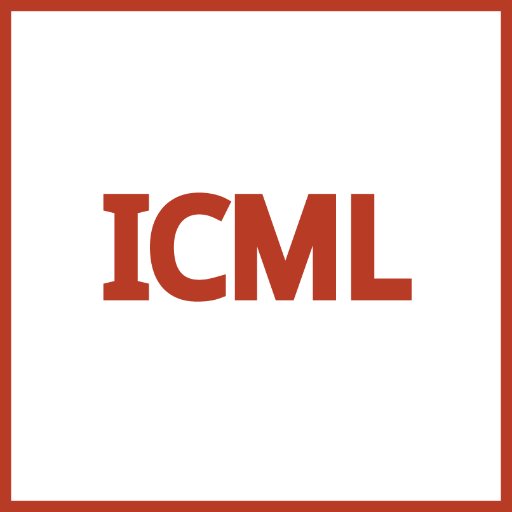icml 2004 论文列表
Machine Learning, Proceedings of the Twenty-first International Conference (ICML 2004), Banff, Alberta, Canada, July 4-8, 2004.
|
Authorship verification as a one-class classification problem.
Learning first-order rules from data with multiple parts: applications on mining chemical compound data.
Extensions of marginalized graph kernels.
Interpolation-based Q-learning.
Learning associative Markov networks.
Learning with non-positive kernels.
Learning random walk models for inducing word dependency distributions.
Learning low dimensional predictive representations.
P3VI: a partitioned, prioritized, parallel value iterator.
Variational methods for the Dirichlet process.
Decentralized detection and classification using kernel methods.
The multiple multiplicative factor model for collaborative filtering.
Improving SVM accuracy by training on auxiliary data sources.
Distribution kernels based on moments of counts.
Gaussian process classification for segmenting and annotating sequences.
Ensemble selection from libraries of models.
An information theoretic analysis of maximum likelihood mixture estimation for exponential families.
Apprenticeship learning via inverse reinforcement learning.
Semi-supervised learning using randomized mincuts.
Training conditional random fields via gradient tree boosting.
A hierarchical method for multi-class support vector machines.
Multi-task feature and kernel selection for SVMs.
Learning and evaluating classifiers under sample selection bias.
Multiple kernel learning, conic duality, and the SMO algorithm.
Bayesian haplo-type inference via the dirichlet process.
Dynamic conditional random fields: factorized probabilistic models for labeling and segmenting sequence data.
A theoretical characterization of linear SVM-based feature selection.
Relational sequential inference with reliable observations.
Take a walk and cluster genes: a TSP-based approach to optimal rearrangement clustering.
Predictive automatic relevance determination by expectation propagation.
A kernel view of the dimensionality reduction of manifolds.
Nonparametric classification with polynomial MPMC cascades.
Links between perceptrons, MLPs and SVMs.
Solving cluster ensemble problems by bipartite graph partitioning.
Learning probabilistic motion models for mobile robots.
A maximum entropy approach to species distribution modeling.
Adaptive cognitive orthotics: combining reinforcement learning and constraint-based temporal reasoning.
Sparse cooperative Q-learning.
A fast iterative algorithm for fisher discriminant using heterogeneous kernels.
K-means clustering via principal component analysis.
Linearized cluster assignment via spectral ordering.
Tractable learning of large Bayes net structures from sparse data.
SVM-based generalized multiple-instance learning via approximate box counting.
Entropy-based criterion in categorical clustering.
Learning to cluster using local neighborhood structure.
Bias and variance in value function estimation.
Bellman goes relational.
Model selection via the AUC.
A needle in a haystack: local one-class optimization.
C4.5 competence map: a phase transition-inspired approach.
Redundant feature elimination for multi-class problems.
Approximate inference by Markov chains on union spaces.
Delegating classifiers.
Unifying collaborative and content-based filtering.
Automated hierarchical mixtures of probabilistic principal component analyzers.
Sequential skewing: an improved skewing algorithm.
Locally linear metric adaptation for semi-supervised clustering.
Convergence of synchronous reinforcement learning with linear function approximation.
Boosting margin based distance functions for clustering.
Text categorization with many redundant features: using aggressive feature selection to make SVMs competitive with C4.5.
Towards tight bounds for rule learning.
A Monte Carlo analysis of ensemble classification.
Diverse ensembles for active learning.
Learning to fly by combining reinforcement learning with behavioural cloning.
Kernel-based discriminative learning algorithms for labeling sequences, trees, and graphs.
Learning to learn with the informative vector machine.
Efficient hierarchical MCMC for policy search.
Coalition calculation in a dynamic agent environment.
A multiplicative up-propagation algorithm.
Feature subset selection for learning preferences: a case study.
Testing the significance of attribute interactions.
Online and batch learning of pseudo-metrics.
Sequential information bottleneck for finite data.
Large margin hierarchical classification.
Lookahead-based algorithms for anytime induction of decision trees.
Incremental learning of linear model trees.
Generative modeling for continuous non-linearly embedded visual inference.
Robust feature induction for support vector machines.
Decision trees with minimal costs.
Bayesian inference for transductive learning of kernel matrix using the Tanner-Wong data augmentation algorithm.
Parameter space exploration with Gaussian process trees.
Optimising area under the ROC curve using gradient descent.
Learning large margin classifiers locally and globally.
Gradient LASSO for feature selection.
Ensembles of nested dichotomies for multi-class problems.
Probabilistic tangent subspace: a unified view.
A MFoM learning approach to robust multiclass multi-label text categorization.
Integrating constraints and metric learning in semi-supervised clustering.
Learning and discovery of predictive state representations in dynamical systems with reset.
The Bayesian backfitting relevance vector machine.
A spatio-temporal extension to Isomap nonlinear dimension reduction.
A pitfall and solution in multi-class feature selection for text classification.
Dynamic abstraction in reinforcement learning via clustering.
A graphical model for protein secondary structure prediction.
Using relative novelty to identify useful temporal abstractions in reinforcement learning.
Margin based feature selection - theory and algorithms.
Communication complexity as a lower bound for learning in games.
Co-EM support vector learning.
Active learning using pre-clustering.
Feature extraction via generalized uncorrelated linear discriminant analysis.
Generalized low rank approximations of matrices.
Utile distinction hidden Markov models.
Learning a kernel matrix for nonlinear dimensionality reduction.
Leveraging the margin more carefully.
Learning to track 3D human motion from silhouettes.
Surrogate maximization/minimization algorithms for AdaBoost and the logistic regression model.
Support vector machine learning for interdependent and structured output spaces.
Online learning of conditionally I.I.D. data.
Learning Bayesian network classifiers by maximizing conditional likelihood.
Estimating replicability of classifier learning experiments.
Kernel conditional random fields: representation and clique selection.
Boosting grammatical inference with confidence oracles.
Probabilistic score estimation with piecewise logistic regression.
A comparative study on methods for reducing myopia of hill-climbing search in multirelational learning.
Hyperplane margin classifiers on the multinomial manifold.
Solving large scale linear prediction problems using stochastic gradient descent algorithms.
Active learning of label ranking functions.


